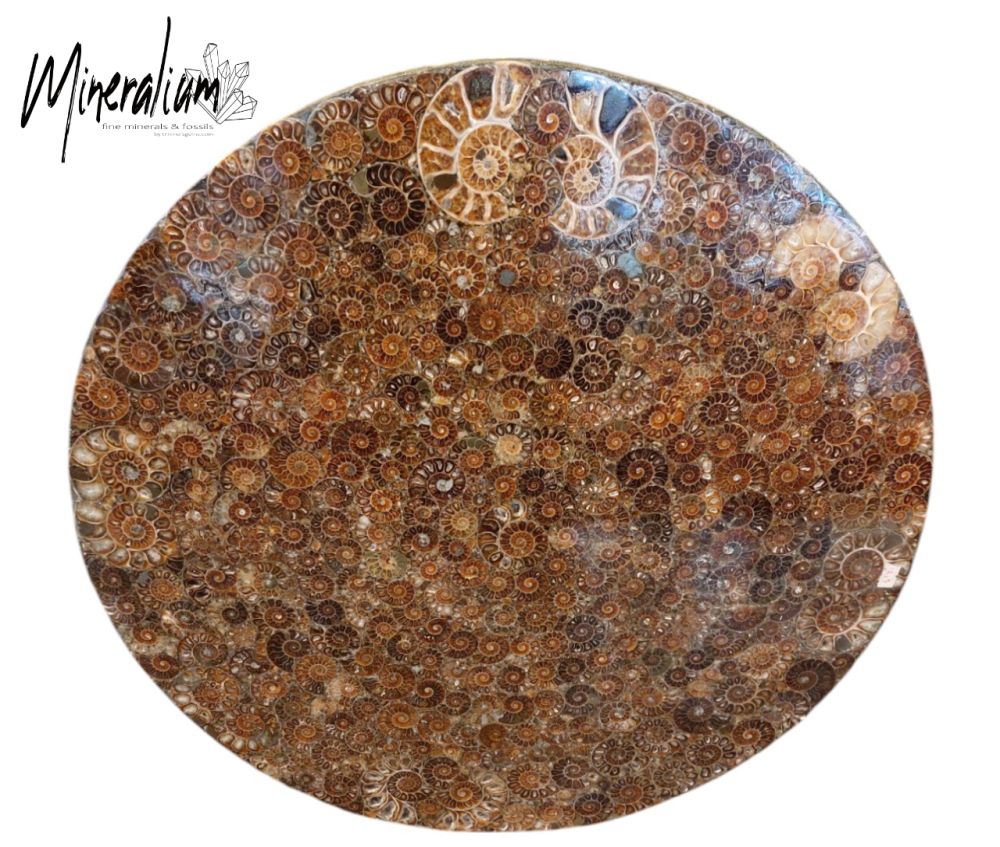We use cookies to make your experience better.
TimmersGems has a new website, existing customers also need to register again.
Ammonite Table Top (70cm Diameter) Only 7 of these were made worldwide!
It was constructed from a few hundred beautiful ammonites! Very nice! Rumour has it that one went to the White House in the US! Unfortunately we can't check it.
Availability:
In stock
SKU
122271
Ammonites (Ammonoidea) are an extinct subclass of the Cephalopoda (squid). They are marine animals that occurred in large numbers worldwide in the late Paleozoic and throughout the Mesozoic. They are found as fossils. The flat, spiral-shaped shell of ammonites consists of several chambers. Every time the animal outgrows its current chamber, a new, larger outer chamber is formed. The animal lives in this outer chamber, which uses the other empty chambers as a means of vertical movement. The ammonite excretes gas in these chambers to regulate the upward force on the shell. Ammonites came in hundreds of species and varieties. They almost all have the same basic plan: a flat, spiral-shaped shell. There are, however, a few exceptions: a few heteromorphic species that do not have a spiral-shaped shell. The size of ammonites varies from less than a centimetre to more than 2.5 metres in diameter. The closest living relatives are the Nautilidae (nautiluses). The name comes from the Egyptian god Amun, who was depicted as a man with the head of a ram. Ammonites resemble the curled ram's horns with which Amun was depicted. The Roman author Pliny the Elder describes fossils of these animals, which he called "ammonis cornu" (horn of Ammon). Ammonites first appeared in the late Silurian, survived the Permian-Triassic extinction with remarkably few species, and really flourished during the Mesozoic. At the end of this period (65 million years ago), most ammonites became extinct, just like the dinosaurs. However, fossils from the Netherlands and Denmark seem to show that the last ammonites still existed in the oldest layers of the Paleocene. The youngest known fossil of an ammonite comes from Denmark and belongs to Hoploscaphites constrictus, which existed until about 65.3 million years ago, some 0.2 to 0.65 million years after the mass extinction, and possibly even half a million years longer. However, these small populations were not enough to save the last ammonites from extinction. It is thought that the ammonites became extinct because of their reproductive strategy. The young were part of the plankton that floated on the sea surface. Acid rain and the obscuration of the sun by dust clouds probably created poor conditions for the eggs and the young to develop.
| Dimensions | 70cm |
|---|---|
| Country of Manufacture | United States |












